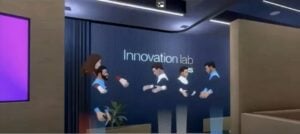All Things Innovation would like to thank the participants: Leslie Shannon, Head of Trend & Innovation Scouting, Nokia; Milan Ivosevic, VP R&D, CooperSurgical; Prapti Jha, T.H. Chan School of Public Health, Harvard University; Sudha Ranganathan, Director Marketing & Talent Solutions, LinkedIn; Harsh Wardhan, Innovation Program Lead, Google; Nevada Sanchez, Co-Founder & VP, Core Tech. Eng., Butterfly Network, Inc.; Oscar Barranco Liebana, Innovation Director, FIFA World Cup 2022; Angelina Carvajal, Strategy & Innovation Partner, Sr. Dir. (Optum Advisory), UnitedHealth Group; and Cherie Leonard, Director of NA Insights, Colgate-Palmolive.
The concept of transformational innovation makes sense. The idea is one of business model innovation, making sure that the future that we’re creating at our organizations is different than the current picture. And, of course, that it’s customer-centric and everything is in place. And then when we open the transformational innovation playbook and try to start doing that, that’s where the issues ensue. So what is actually achievable?
Leslie Shannon: From my own company’s history, there’s been two kinds. One has been taking advantage of a new technology that has arisen, and somebody gutsy enough and bold enough to see a way that there’s a link between the current technology and the next technology, and just recognizing that this is the natural evolution. And not being afraid of cannibalizing your preexisting product and so on, but actually moving naturally in that area. But, there’s also the total tragedy way, back against the wall, everything has gone to hell. And we’ve had a couple of those too, where you have to innovate if you’re going to survive at all. And that one’s a little bit less desirable, I’ll just say.
Seth Adler: Fair enough. Oscar, I want to go to you next, because we just ran the FIFA World Cup and congratulations. You were responsible for innovation within. Discuss transformational innovation from your perspective.
Oscar Barrance Liebana: I think from the FIFA World Cup, knowing that, for example, we have engaged with 67% of the global population, is a big challenge concerning the reliability of the technology and the solutions that we are implementing. However, I would say we highlighted that the vision and the strength to commit to deliver innovation and to deliver amazing, that was our slogan, was something really incredible for the whole country. From all the different organizations and the strength of the whole ecosystem supporting the idea to deliver ‘amazing’ to the world. It was something unique and the momentum and the snowball effect that was created at the end of the day, it really created an amazing delivery.
Adler: Sudha, you’re at a large tech company, which is often cited as a leader in terms of innovation, and you’re helping us all transform. What are your thoughts on transformational innovation?
Sudha Ranganathan: A lot of transformational innovation from my perspective is through the lens of talent and how talent is set up to innovate. There’s a couple of big questions that come to mind. At the level of the individual contributor, are they being given a charter to take intelligent risks? Because risks are important if innovation is to be produced. And at the level of leadership, are they creating enough safety in the system that failure is seen as a chance for growth rather than as banishment or the potential loss of a job, for example? There’s this very transparent set of expectations and communication on if we want innovation to happen, there’s also a risk to be taken, and are we comfortable with that risk, equipping our ICs to know that that risk is OK, but then equipping our managers and incentivizing our managers to reward talent when risks pay out, but to not punish them when those risks don’t go as planned, and instead to learn from them and then contribute to the next risk that we can take.
Seth Adler: Harsh, you are also at a sizeable technology company. As far as transformational innovation from your unique perspective, you being in charge of innovation for a part of the organization, where are you coming from?
Harsh Wardhan: When I think about transformational innovation, I’ll first give my personal thoughts on it, then I’ll come from my company perspective, not representing Google, but still what we are doing. When we think about transformational innovation, I think about two types. One is for survival, because you need to continuously sustain in the game. That’s your sustainable innovation. The other one is disruptive innovation or radical innovation. Those two are a little bit different, but intent is the same. That’s how I think about it. But then, because I come from Google, let’s talk about digital transformation a little bit. We confuse digitization with digital transformation.
And when people are talking about digital transformation, they’re focusing too much on digital, not the word transformation itself. It has to deal with change, it has to deal with culture like Sudha pointed out. It’s not about deploying a few tools that help you do everything on a computer screen rather than paper. It’s about you change the way we work. And, I think, that’s the underlying thing about transformational innovation, whether it is digital transformation, whether it is about sustainability in innovation, that’s the thing that we have to address, that we have to be comfortable with the change. And one of the definitions of innovation is change.
Shannon: Actually Harsh, I’ve got a great example of what you just talked about. We use email, we all use email. Email is effectively exactly the same as typing out a memo and putting it into your office envelope. It’s been around for 25 years, 30 years. And all of us who are older, we still use that as our main thing. Today, people who are younger use Slack or Discord, because that’s a way to have a record. That’s a message that’s sent out to everyone, and it goes into the permanent history of the project. And isn’t that better? Yes, it is. So, that’s the difference between digitizing and digitally transforming.
Wardhan: It is more and more important to think about that change of the way we work now, because we are talking about the elephant in the room, which is AI.
Our roundtable panelists so far have looked at transformational innovation from the lens of technology to engagement and delivery. Talent is also a key point that many panelists mentioned, as is fostering a culture of innovation. People, and the mindset of the organization, are key, whether it’s sustainable or disruptive innovation, or short-term or long-term planning. Finally, a distinction has been made between true digital transformation and merely digitization of assets.
Transformational Innovation Is About the People
Adler: You did bring it back to AI, but what I noticed from Sudha and then also from Harsh, the two big technology folks that have the most experience in big technology, is that they talked about people and change management. Cherie, you work for a vaunted CPG organization. I want to hear what your thoughts are on transformational innovation, but isn’t it interesting that the tech people are talking about people?
Cherie Leonard: I think it’s fascinating we’re people first, right? I think the idea that, in my mind, it’s behavior change, fundamentally, behavior change that we’re expecting consumers to do in many cases. You have a new format, there are sustainable benefits, whatever it is, but there’s fundamentally, especially with some of the day-to-day routines that people have, you’re really making them think and you’re disrupting their everyday, even if it’s a small thing, such as brushing their teeth. Behavior change is a crucial part externally when you think about who we’re innovating for and actually solving a problem that they have, not just trying to find a technology and find a problem to solve.
But, I also think, internally behavior change and some of the conversations this morning touched on it. It’s more like, “What are those metrics we’re using and how do we balance this urgency for transformation with the need to iterate your way through it?” And I don’t know that there’s a right answer in every situation, but that’s where I’ve seen a big tug of war in terms of like, “Let’s just get something out the door. We have to do something. We have to be leading.” Versus, “Let’s wait and see and iterate and almost in some ways wait for consumers to catch up.” And I think perhaps depending upon the brand, depending upon the industry, that could look very different.
Adler: Angelina, what are your thoughts on that very issue of waiting for the consumer, iteratively innovating along the way and having a nice gliding path as Cherie is suggesting?
Angelina Caravajal: I think it really depends what it is that you’re innovating. It depends on the industry that you’re in. Sometimes the consumer leads. For example, now in the world of digitization with the Amazons, with the Googles, with the consumer behavior has changed completely, very quickly. If you don’t pay attention to what the consumer is doing and thinking, you can very easily fall behind, and you have to adapt yourself. That’s one way of transforming.
Another way is you may have a great product that doesn’t exist in the market today that you want to bring it to the market. When you think about, “How do I transform to have that product be successful?” You have to consider the entire ecosystem, not just your customer, but your customer’s customer. Understand the bottleneck, understand the economic equations. You want to create something that’s sticky, that’s sustainable in the long run. All of this, of course, takes people, and culture, and technology, and tremendous investment and persistence.
The roundtable participants continued the discussion revolving around people. This encompasses both the changing behavior of consumers along with the behavioral insights derived from looking internally at the role talent plays in the organization. Lastly, for transformation to be successful, one must consider the entire ecosystem, from internal teams to the evolving consumer to your customer’s customer.
Focusing on Technology and Data Disruption
Adler: Persistence, of course, being key. We’ve got really big organizations that are represented here. We also, Nevada, I will refer to your organization lovingly as a startup. What perspective are you bringing to the table as far as transformational innovation from a startup perspective?
Nevada Sanchez: I think for us it comes down to just an incredible scope and scale of the problem that you have to solve to truly affect a transformational innovation and bring it to fruition. When we talk about innovation six years ago before we launched the product, the innovation was in the technology. We put imaging on a chip. That’s cool, no one’s done that before. It’s brought the whole industry to a whole new digital era. And now that you have that, what do you do with it? It’s pretty obvious to say, “Throw away the stethoscope, bring in the imaging device at the point of care. This is going to be the future.” And then you see that to someone, they believe you, it sounds great. In practice, “How do you actually do that, when I’ve done it this way for 20 years, I’m not going to pick up this fancy new toy and do something different. This is the way I do it, go away.”
There’s that behavioral aspect to it. There’s also just solving the whole problem. So you go to the hospital systems and you can talk to them about all the advantages in patient care, and readmissions, and capturing revenue from scans. And they say, “That’s great, but I need all of this infrastructure.” OK, we go off and build that now. And then we talk about bringing AI into the mix to solve the problem of suppose I find someone that does want to embrace this, say, “Great, I do want to replace my stethoscope and throw it out.” And then I put this thing down, “I don’t know what I’m looking at. What’s going on here? What is that fuzzy thing over there? I’ve never seen that before, except maybe in a cartoon, in a textbook.” So, we work on building tools to help bring that extra layer of understanding to it. But, now we have to convince the regulators that this is safe and effective. And so, the problem just keeps growing. You have to have the wherewithal to actually solve all of it to really affect transformational change.
Adler: Milan, while we’re in healthcare, what might you add?
Milan Ivosevic: I think one perspective from our side would be that if he would need to be or if he would be disrupted, the best way to be is internally by yourself. And with that approach, it just takes conscious decisions from the management, especially in the companies that already have existing portfolios. You will always want to have incremental, you need to have incremental innovations. But, then it takes conscious decision to purposely invest, and separate, and look into disrupting yourself, because your current operations are designed to actually resist disruption for continuity, for cashflow. And if you engage the same people, they are conflicted, and it doesn’t work that way. It takes that conscious decision of investing into disrupting yourself and separating even physically that group from your main operation.
Ranganathan: Yes. Something that you said earlier really sparked a thought for me on there’s innovation, which is really stretching the edges and pushing them as far as possible. But, then there’s a grounding in, “Where is the customer today?” And not losing sight of what’s the current workflow, what are they used to, what do they recognize? And the Jobs to be Done framework is a really popular one. I know it is in tech, but I think it’s in other industries gaining popularity as well. It feels like a really interesting and thoughtful way of anchoring in the customer first, and then exploring the category through their lens, and then expanding your definition of the category a little more, to see what jobs to be done are either unserved or under served, because that’s where real innovation comes from. And I just want to call out a quick pet peeve.
Often when we talk about customer centricity and innovation, I get people reciting to me the Henry Ford quote or the one that’s been attributed to him anyway. If I asked people what they wanted, they would say they wanted a faster horse. I’m sorry, but I call that out. Really good customer centricity is organic research that taps into core motivations, core psychology, and what customers are really trying to solve for. It doesn’t mean to go ask them what the solution looks like. It is to mine the depth of what the real problem is so you can go design the solution using design thinking approaches and so on. And I wonder if this is the right time to pass it to Prapti.
Prapti Jha: Absolutely. So, I’ll first touch on the Henry Ford quote, and it always comes so much about if you ask people, they would say a faster horse. But then again, putting it very bluntly, maybe the researcher needs to go in depth, is like, “Okay, what do you want?” “Faster horse.” “Why do you want a faster horse?” Maybe asking that question leads to, “Yes, maybe I want to go to the grocery shop in less than five minutes.” Why? “Because I need to take care of my kids, I have to do other stuff.”
Basically what they they’re trying to do is save time. They need speed by which they can reach from point A to point B. That’s the motivation and value, and the person’s or users aspiration that you have to get to. And that’s where design thinking that Sudha mentioned, and other ways of getting to those core values and aspirations help. And also just basing your innovation on that, sometimes we call it desirability led innovation. And that desirability can be your user’s desirability, but sometimes it can also be your other stakeholder’s desirability and are we taking care of all those desirability? And so, I love to think about an ecosystem of stakeholders that you’re working with, not necessarily just the users.
Liebana: There is one important challenge that we face also that during the FIFA World Cup is just when we were applying the Jobs to be Done analysis, and integrating the customer journey. We realized there is a technology trap. We understand that when we are in the functional area, we know that we can save cost, increase efficiency, the operational speed, performance and so on. But, when we are talking about the social and emotional aspects, we don’t have data, and the technology is lost.
Basically, when we wanted to go deeper and understand exactly what is the new value proposition that we are touching, the social and emotional aspect, we are lost. We don’t have the technology to understand this. We don’t have the data. We cannot go through the personal privacy, the privacy of the data, personal data and so on. So, we were finding that we have a technology trap where you are thinking, “OK, we are innovating where the technology allows me to innovate.” And sometimes it’s very difficult to go to those places that the technology and the data doesn’t exist. You cannot follow an evidence-based approach and you are lost.
From large organizations to smaller startups, bringing disruptive innovation to the market is not enough. Scalability, as well as problem solving, is also key to the ecosystem, while avoiding technology traps. It’s also important to recognize that the company has to be committed to consciously investing in disrupting itself to bring the product, service or system to the market. Design thinking, the Jobs to be Done framework, and staying focused on the customer all play a role in transformational innovation.
Building Innovation Among Your Team: Final Takeaways
Adler: Some of this is a vernacular issue that we really don’t agree on even the word “process,” the definition of it. That’s an issue that we’ve got to overcome. In overcoming that issue, I want to start to land the plane with the fact that we are all in this together. We are trying to not just get to tomorrow. We’re really trying to get to the next decade and on. And so, with that in mind, when you walk away from this table, what is one thing that you would like to implement at the end of this week when you’re back in the office with your colleagues?
Sanchez: I would like to figure out how to implement the right process for where we are today, not at the scale of Google, but also not at the scale of a tiny startup. And some of the things that I’m thinking about is we talked a lot about process from a negative perspective because there are processes that are often defensive. How do I make sure nobody screws up? And there are places where this is appropriate. A safety critical flight system, please make sure nobody screws up.
But, that’s not the right framework to encourage innovation. So, when you think about it, it is really about if I throw a bunch of 300 people in a room, it’s going to be chaos. So, how can I make this group work effectively? Will you find ways to encourage communication that maybe wouldn’t happen naturally? Encourage the acquisition of customer data and customer information, make sure it comes into the process at some point, wherever it might be. But it’s not to restrict people. And also it’s important, it’s not that you can’t use it as a scapegoat for accountability either. “I followed the process, so I don’t know why it failed.” So, it’s just learning about our needs, how do we solve this problem of making a group of 300 people, it’s going to be larger soon, work effectively, and do so in a way that allows us to turn this innovation and transformation.
Ranganathan: I sit on the other end of the spectrum. I’m also personally inclined to be much more of a pragmatist. Often I’m limited by my own imagination and my own business pragmatism of, “We shouldn’t do this because it’s not going to generate a return in the next couple of years.” So, you need to keep talking about your vision. Because, the goal is not to sell someone on it immediately, the goal is to put it in their consideration, because the right time, the right place will come when suddenly your vision is the right answer to a question that they’re asking.
And when they’re asking that question, your vision had better be top of mind for them, because that’s how they’ll connect the dots and it’ll finally become a reality. So, my visions aren’t big and grand, but whatever they are, I have limited myself from socializing them in the past, because I think it’s not practical enough. But, I’m just walking away with a very different way of approaching this, which is, “Maybe I should be socializing the vision and not be attached to it happening right now.” And then I just wait for the right time and the right place and it will happen.
Shannon: One of the most powerful things that I’ve heard today was the flip side of what you’re talking about, because I’m all about vision. I’m just visioning all over the place. And getting people to take that seriously, and particularly people who are skeptical or who are detractors, don’t be so worried about having your ideas be your ideas. Be open to letting the other person think it’s their idea, and then give them credit for it. And then, the other one is also listen to your detractors, because maybe they’re right. And be willing to pivot and incorporate their thinking.
Caravajal: I’ve always been a big believer in cross-industry learnings and collaborating with people who are really far from what it is that you’re doing in hopes of understanding how they think about the problems that they’re facing, maybe not the problem that I’m dealing with, but something completely different. If you do that, your tool kit expands whether or not you use it. You just become so much more versatile in what you do to solve problems that are near to you. So, this has reinforced this idea that I’ve had, because at the end, it’ll make us more efficient in what we do and successful in what it is we want to achieve.
Leonard: Fall in love with the problem. That’s not a new idea, we’ve all heard it a million times. But, I think, you see it come to life, like you mentioned, across all the different industries. It goes back to having humility. And you’re influencing, “Sure, your idea.” You fell in love with the problem just like I did. So, I think, it’s seeding that level of influence and also then building the culture of psychological safety where you can have those conversations and where maybe that bit of internal friction is good too, to get you to a better place down the line.
Ivosevic: Needless to say, the underlying tone of this conference is AI. And my company relied on AI actually a lot, but more into the scientific part where we do it for data analysis, data science. But, when we talk about using it for understanding the needs and trends, and reaching out in the web, there was a little nugget I picked up. If we don’t associate it with this human centricity part, we are not getting the best out of it, then it becomes just a regular thing.
Liebana: For me, I think, one of the biggest challenges is, we understand innovation from a systematic way. It’s a system. And so, you need to select what are the key agents so that you can create this innovation. So, one of the key aspect for us was how to create a snowball effect in the system so that we create the momentum. And so, when the momentum is built with a lot of different key stakeholders, it’s so big that is very difficult to stop. And it helps management, it helps different stakeholders, “Oh, we have 12 different key stakeholders that they have the buy-in. OK, I want to be there.” Understanding the ecosystem and the system interrelationships and interdependency is very critical to move things forward, to convince people and to have the momentum to make things happen.
Wardhan: Thinking about organization internally, and I’ll say this in the form of the takeaway that I’m going to take back to my team, as well as the other teams that I work with inside, outside my company. We talk about organization from a culture perspective, an enablement perspective for all the employees of the company because that sparks innovation. Thank you for bringing all of us together from such a diverse industrial perspective. I’m going to go back and I’m going to say all of these industries, I’m going to quote names of companies, agreed on people centricity, whether it is internal to an organization or external. That’s what I’m going to take back. And for that, you need organizational anthropology, because you need to understand people inside and outside.
Jha: What I’m hearing, and that this experience has been, is a need for more alignment when it comes to language around innovation or the practices around innovation. That doesn’t necessarily mean we all follow the same process for innovation. We might have different processes. But, when we sit together and chat about innovation, are we all seeing the same thing? So, there is an example of prototype, the word “prototype,” that for example, I said, “Yes, I created a prototype for this project.” So, that might be thinking about a vehicle, a prototype that’s created for a vehicle, which is like $1,000, $1 million. I might be thinking of a sketch on a paper. Someone else might be thinking of a Lego piece. And I don’t care to explain what I mean by a prototype. So, basically all of us have a different takeaway from the same conversation, because of the language misalignment. From an academic perspective, I do see a huge value and maybe an opportunity for all of us to contribute to this in different ways that we can.
Adler: Absolutely. And it comes back to the lexicon. Are we even speaking the same language? I think we are around this table, and I really appreciate everyone’s time. Thank you so much.
As our roundtable panelists close out the discussion, some key takeaways and observations emerged. Implementing the right process, or framework, must encourage innovation. Keep talking about your vision, and make sure your voice is heard at the executive table, whether it’s a big or small step that you are planning in the future. Keep listening and gaining feedback. Cross industry learning and collaboration can lead to new insights. Be problem-oriented when it comes to solutions. Understanding the right system that leads to innovation. There is a need for more alignment when it comes to language around innovation or the practices around innovation. Despite the threat or opportunity of AI, understanding people is a significant way forward. Lead with human-centricity.
Contributor
-

Seth Adler heads up All Things Insights & All Things Innovation. He has spent his career bringing people together around content. He has a dynamic background producing events, podcasts, video, and the written word.
View all posts





































































































































































